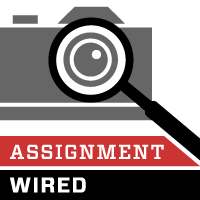BA as it was called was quite popular in the early parts of the century, and then it sort of fell by the wayside with the clamor for the 1st group, engineering, CA, medicine and management and much later Computer science, bio chemistry and so on. BA has now lost all its allure; not very many go for History and languages these days and most find it dreary and not something that would provide you a steady job or income. But well, the colleges are full and the classes go on, I believe, filling the hours and days till finally the student takes the exam and gets notified via a newspaper or something that he is a BA graduate. There is no fanfare, no great convocation ceremony like you see in other countries. The BA graduate joins as one of the teeming millions, not remembering an iota of the history or whatever he or she learnt, coz it was of no interest to the individual in the first place.

Today virtually any book of significance you can think of is translated into Malayalam. The latest Paulo Coelho or the Orhan Pamuk book can be found in the Malayalam book shops of Calicut. Everybody in Kerala reads Malayalam, can write in Malayalam and Kerala boasts 100% literacy though that is valid for Malayalam as such and not necessarily English, which by the way is also perfectly OK. But can you imagine a time when a BA 2nd language Malayalam question paper had questions about the Panchatantra, the only four part Malayalam text book available for students? Can you imagine a time when it was taught by Englishmen? These days you shudder when Udit Narayan mispronounces a string of words in a song, so how would it be when a Englishman taught you the basic of the very language?
Most of you believe that the first Malayalam grammar works were by Gundert, but they were actually not. It started with a Portuguese, Dutch Malayalam dictionary in 1746, followed by a Grammar book by Surgeon Drummond in 1749. In 1839, another grammar book was written by F spring. Joseph Peet followed in 1841, and Arbuthnot followed in 1864. But all these books were in English (about Malayalam grammar) and it was only in 1868 that Gundert’s book in Malayalam was published (originally published in part in 1851). Then followed works by native speakers, like Kovunni Nedungadi, Tatchu Muttattu, Govinda Pillai and so on.. The time was thus the 1860’s. Readers must note that there were a large number of works written by native speakers before all this, from the 15th century, but I am talking about instructional books.
The Madras University was a working institution by 1840. In fact by 1855 there was even a plan to build a monster university costing over a million Pound sterling and bigger than any building in the world, but was thrown out by the supreme government as a wasteful idea. While they had a number of other subjects, the second language choice was somewhat circumspect( Hindustani, Tamil,Telugu, Malayalam). But let us now get to the details of Malayalam as offered Passages from the Panchatantra formed the syllabus for the exams. Some years later, it was slightly better, the exam covered passages from Gundert’s Keralolpatti. And thus the Parasurama cult got even more ingrained into the Malayali psyche. But can you believe that for 10 or 20 years the main stalwarts behind the Malayalam department of the Madras University comprised three Englishmen and much later two Malayalis?
To get to all this you have to go to 1858, in Madras. It was in 1858 when the EIC assets were transferred to her majesty’s British government and it was the time Guindy Engineering College was affiliated to the Madras University. The Sepoy mutiny was just about to happen. The Madras times was being published and the Poligar revolt was underway in Madras presidency.
So we are starting to see that studying in college was somewhat different a century back. Let me tell you how one went about getting a BA in the late 19th century, at for example Madras university. Now many of you may wonder why I am talking about such a strange subject. Some of you may have heard about these things from your grand or great grand parent, if they had sat through one of those examinations. But well, I learnt about all this by chance, thanks to one reader who sought help in locating and getting details on one E Marsden from the annals of history. I could not really help her too much, but I found that this individual was in Travancore and Madras, studied Malayalam, and obtained a BA from Madras University. He then went on to write a number of Malayalam text books that was in the forthcoming syllabi and made a good amount of money from selling the books. I found out also that he went back and settled in a home in England.
It so happened that I found his name as a BA graduate of 1870 passing his exams with a 2nd class. There was not a single first class graduate. That sort of got me interested. What I also found interesting was the fact that he left in posterity an address that covered three places I knew. Pembroke, Bath and Cheltenham, all places I had been to. Marsden, E., Pembroke House, Bath Road, Cheltenham - that was his address. But no further information was available on this person, other than the fact that his Malayalam text books were quite slanted in favor of the colonial government. So I left him in peace, undisturbed after a tough time in South India, in his place of eternal rest in a grave in Cheltenham UK. But I have to thank reader Sarah Stephen for triggering all this. Anyway, Marsden or his text books is not the topic, but the Malayalam course for a BA degree that one got from Madras University and the exams in Malayalam as second language in that effort.
While Gundert may have made the dictionary and moved on, the person who taught much of basic Malayalam and instilled a practice of it at a graduate and later post graduate level was a person named Liston Garthwaite. For some twenty years, he handle dteh Malayalam department in Madras University, and before him (i.e. before 1860 or so) it was Arbuthnot, though I doubt anybody took an exam in Malayalam. Garthwaite’s bio goes thus…
GARTHWAITE, LISTON, B.A. (London), late Education Department, Madras. Served from 8th April, 1857, as head master of the Zillali school, Cuddalore, of the provincial school, Calicut, and of the normal school, Cannanore, and as deputy inspector of schools; also acted as Malayan translator, and Canarese translator to government from Sept., 1869, served as inspector of schools; compiled Canarese and Malayan Arzis for the secretary of state, and also various text-books; fellow of Madras University, March, 1884; 2nd class, education department, May, 1884 ; on special duty at Madras in connection with preparation of a scheme for development of technical and scientific education, in 1884-85, and again in 1885-86; retired, Dec, 1888.
Another notable scholar who took an interest in Malayalam at that time was Mr. FW Ellis, but one of the first to get through the BA courses and become an instructor in his mother tongue was native speaker Achyutha Panickar followed by TC Poonen.
So we see that by now the basics for an institutional study of the language has been set into place. Some kind of instructors and books are available though sketchy at best. The various instructors we see from 1870-1880 are W. Joyes, Esq. L. Garthwaite & Achyuta Panikkar, JR Thomas, TC Poonen. Panikkar himself had got his BA in 1867 from Madras.
Let us look at the years 1858/1859.The single feeder schools from Malabar was the Provincial school Calicut where you a person with a good moral character sat to write the entrance exam as a 16 years old, after paying five rupees. One of the possible subjects was Malayalam and the exam was on by two books Panchatantra Part 1 and Malayalam selections ( Kottayam 1851). All you had to do was translate…Easy sentences in the two languages in which the candidate is examined shall be given for translation the one into another………….
If you entered for BA, you had subjects as follows Panchatantra Parts II-V and Bharatam. You completed three years of studies and sat for exams paying twenty five rupees.
Candidates shall be examined in each of the languages selected by them both in prose and poetry, the subject being named by the Senate two years previous to the Examination from any approved classical or standard works
Let us jump a few years and go to 1863. We find the first Prince from Travancore in the faculty, and Madhav Rao the Dewan of Travancore also listed. As I read, I saw that Hindustani exams were taught and taken in Arabic script!!
By 1864, the syllabus had expanded somewhat and Garthwaite was appointed as the Malayalam examiner. The matriculation syllabus read thus Panchatantra Part 1, Anthology 71 pages, omitting pages 58-67, Malayalam sketches of Europe & England.
For the first BA exam, they covered Keralolpatti & Nalacharita
And for the BA exam, it was
Acyutha Panikkar, Karunakara Menon, TC Poonen, etc graduated under Garthwaite’s instructions.
But it was I believe in 1865 that the first question papers and syllabus came about under Garthwaite. The question papers were partly in English and in Malayalam showing the relatively low grasp of the language, but still an admirable attempt at formalizing studies. Take a look at the question paper.
Or try this
By 1866, the syllabus increased
By this time a number of people from Malabar had started appearing and passing exams. The exams had extensive inclusions from Keralolpatti and Kerala Pazhama as well as from the Mahabharata and Ramayana and curiously, some verbose court rulings to translate.
Late into the 1870’s TC Poonen (CMS Kottayam) and V Acyutha Panikkar and one JR Thomas became examiners taking over from Garthwaite. I saw that Sarvottama Rao studied there & passed in 1867, and it was possibly his son who was my head master in Ganapati School in the late 1960’s? By 1976, Garthwaite was back. Around 1877 there was a maharaja of Cochin scholarship. In 1877 the Malayalam examiner was an RA Sheppard. And V Achyutha Panikkar was joined by R Diez and U Achyutan Nayar, and the syllabus further expanded. I could never find further details of Acyutha Panikkar, Achuyutan Nair etc, but TC Poonen is well remembered in Kottayam circles.
So that wa show it was for a person to take a Malayalam exam in the 19th century. Today you see school students cramming up what they did for a BA in those days, but remember, the problem at that time was to set a threshold and pass it. For people who had no concept of such an education system, it must have been a great challenge. Looking at them today is kind of silly, but now you know at least why Keralolpatti was given such a great significance by the previous generation and why it was and is much talked about.
There were other universities teaching Malayalam and there were schools teaching Malayalam, but this was just a peek into the Madras University’s handling of Malayalam as a subject for attaining a Bachelor of Arts. Spare a thought for people like Garthwaite and Sheppard, they toiled hard in a world alien to them, with the greatest of challenges, teaching Malayalam to a Malayali. Now I can imagine how it would have been, when the Indian teachers came to USA to teach English or Math or whatever… a few years back.
References
A progressive grammar of the Malayalam language – L Joannes Frohnmeyer
Madras university calendars 1858-1880















































